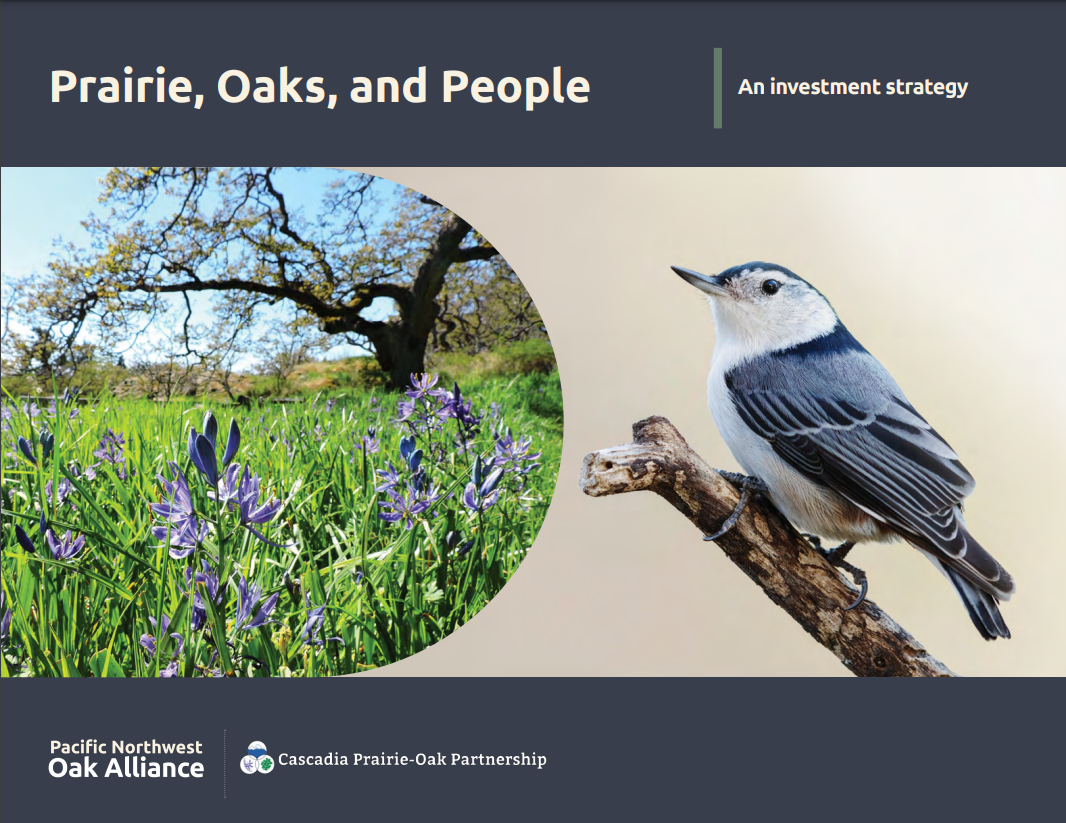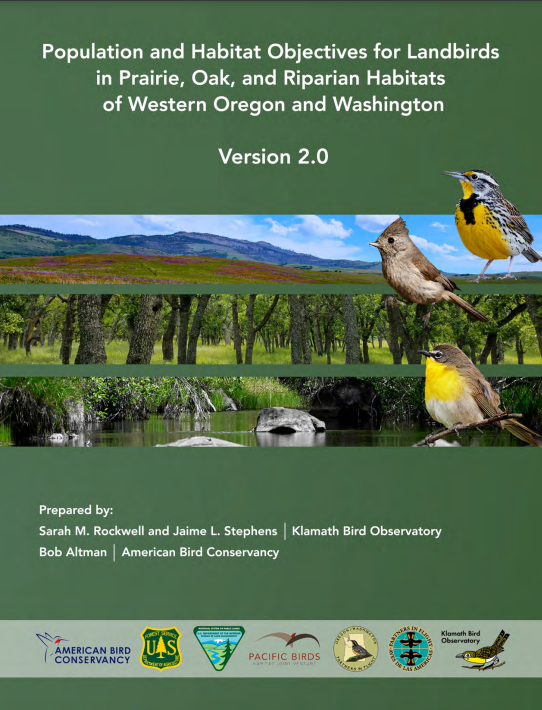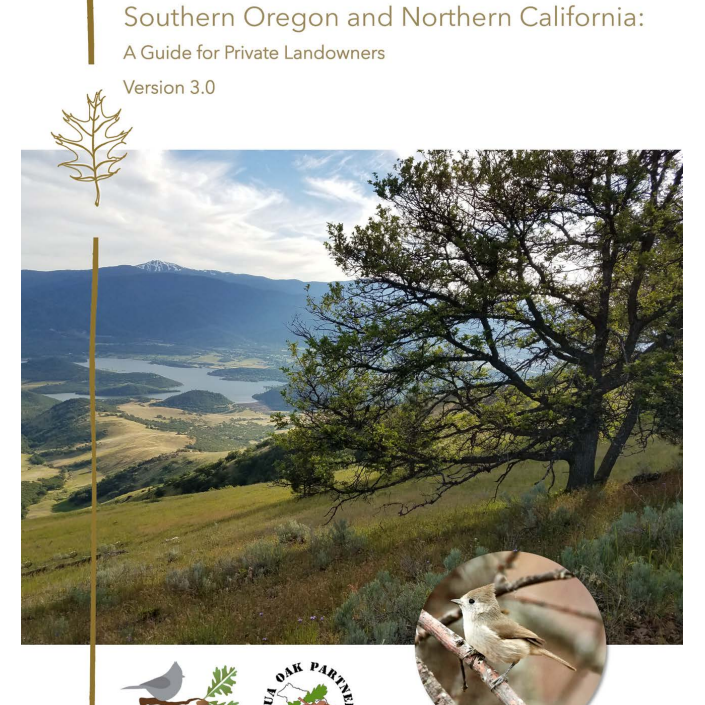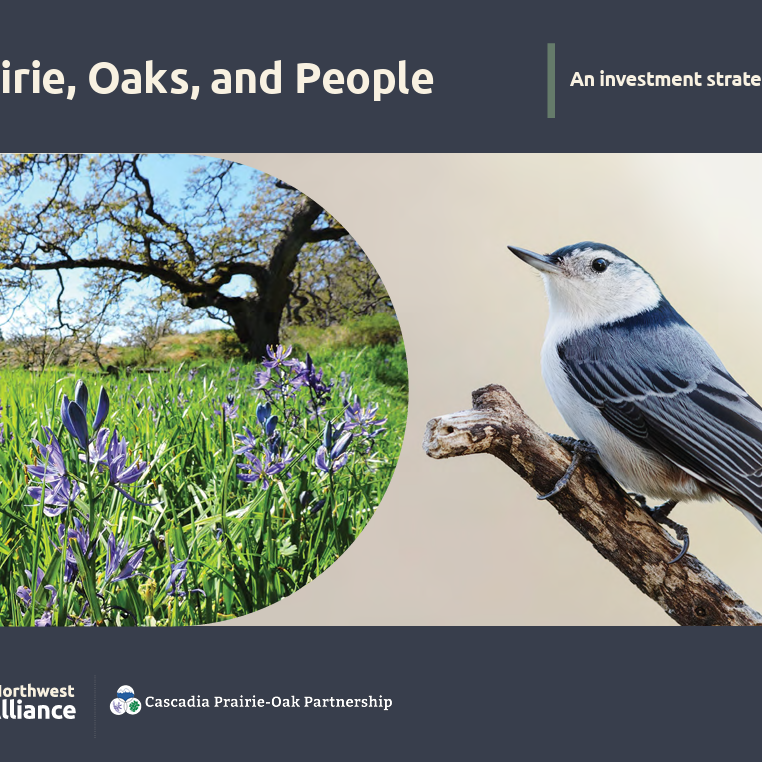Oak and prairie systems are some of the most biologically diverse, culturally important, and climate-resilient habitats in the Pacific Northwest. They are also among the most imperiled.
Oak woodlands, prairies, oak savanna, oak chaparral, and mixed oak-conifer forests were prominent landscape features from British Columbia to northern California. Today, only pockets of these habitats remain and some of the birds that depend on them are declining, some precipitously. We’re working to change that.
Two iconic features define the prairie-oak ecosystems of the Pacific Northwest. First is the signature oak tree –typically Oregon white oak (quercus Garryana) from northern California to British Columbia, and California black oak (quercus Kelloggii) at the southern end of the region.
The First Peoples of this region have long relied on oak trees and prairies for food and cultural practices, using fire to maintain and nurture habitats that support hundreds of plant and animal species, many of which hold cultural importance. Today, these are the landscapes where the majority of the human population in the Pacific Northwest live, farm, and recreate–bringing fire suppression, invasive species, agriculture, and other changes along with them.
Our goal is to foster the conservation and management of oak and prairie habitats in ways that work for both wildlife and people. Our work in oak and prairie is guided by a conservation priority committee.
Case for Conservation
Investing now in oak and prairie systems and species is critical:
People connect to these landscapes
- Culturally important first foods, plant materials, and medicines foundational to the lifeways of Indigenous people are threatened by the loss of habitat and access.
- People have a natural affinity for oaks and prairies due to their scenic beauty and open accessibility.
Restored forests are resilient forests
- 46 species that depend on oak and prairie systems are so imperiled they are legally regulated.
- Healthy oak and prairie habitats across the Pacific Northwest are essential to halt and reverse the decline of species such as the Oregon vesper sparrow, oak titmouse, and black-throated gray warbler.
- Oak trees are very slow growing – it takes 100-200 years to regrow an oak woodland - and old trees provide the significant ecological function found in these ecosystems. Plants that grow in the understory are often displaced by weeds following excessive grazing or soil disturbance, making intact oak woodlands effectively irreplaceable.
Bridging Land Management and Livelihoods
- Much remaining oak habitat occurs in the wildland-urban interface, putting oaks in the way of rural and urban development. As population growth accelerates, urban growth boundaries will expand.
- Collaborative partnerships build community resilience by keeping working lands working and reducing development threats from land ownership and management change.
Landscape mosaics with oak habitats protect everyone
- When people treat oak systems with care and respect – preventing conversion to more developed uses, shepherding low-intensity fire, preventing the spread of invasive species – we enjoy a host of benefits including reduced high-intensity wildfire, improved soil and water quality, abundant flowers for pollinators, recreation opportunities, and increased property values.
- When we restore oak habitats, we reduce the density of less drought-tolerant conifers. These actions simultaneously create space for oak regrowth and reduce fuel loads to increase community resilience to wildfires and drought.
- The open canopy structure of oak woodland and savanna means wildfires are more likely to stay on the ground and not become fast-traveling crown fires with extreme flame lengths.
Prairies build underground reservoirs of carbon
- Oak and prairie grasslands are effective carbon sinks, helping to mitigate the effects of climate change by absorbing and storing significant amounts of carbon.
- As roots decay, they turn into soil organic matter, building stores of carbon that are much better protected from wildfire than above-ground carbon storage in trees.
Priority habitats
- Oak Woodlands
- Oak Savannas
- Prairie Grasslands
- Agricultural lands
- Mixed Oak-Conifer Forests
- Oak Chaparral
Key Strategies
- Build ecosystem and community resilience
- Reconnect people to oak and prairie
- Integrate and Advance tribal priorities
Prairie, Oaks and People: An Investment Strategy and Business Plan
The Prairie, Oaks and People plan aims to connect timely funding opportunities to the clearly defined restoration needs of oak and prairie ecosystems and the people who depend on them.
Over the last decade, conservation practitioners, agency staff, tribal partners, scientists, landowners, and community members have been working together to develop the knowledge, policies, and funding streams to more rapidly protect and restore what remains of oak and prairie ecosystems from northern California to southern British Columbia. With targeted, coordinated investment, we can revitalize imperiled oak and prairie ecosystems and the range of important benefits they provide.
The investment strategy and business plan is designed to focus resources on the highest-priority needs over the next 5 years. It also presents funding requests that can be realistically implemented within that time frame. It defines the baseline level of resources needed for conservation partnerships to operate effectively, secure funding, and coordinate and implement on-the-ground restoration work.
You can read the first edition of 'Prairie, Oaks and People' here.
The Oak Alliance
The Oak Alliance is a dynamic coalition of partnerships across the Pacific Northwest, spearheaded by the Pacific Birds Habitat Joint Venture. Our collaborative effort focuses on landscape-scale oak and prairie conservation, harnessing collective energy to build capacity, secure resources, inform policy, and generate broad public support for oak conservation and restoration.
We recognize the vital role oaks play in enhancing forest and climate resilience, supporting healthy wildlife populations, community well-being, and driving economic growth from rural to urban areas across the Pacific Northwest. Our mission is to sustain these advantages and preserve oak ecosystems.
BY THE NUMBERS: Prairie-Oak Species
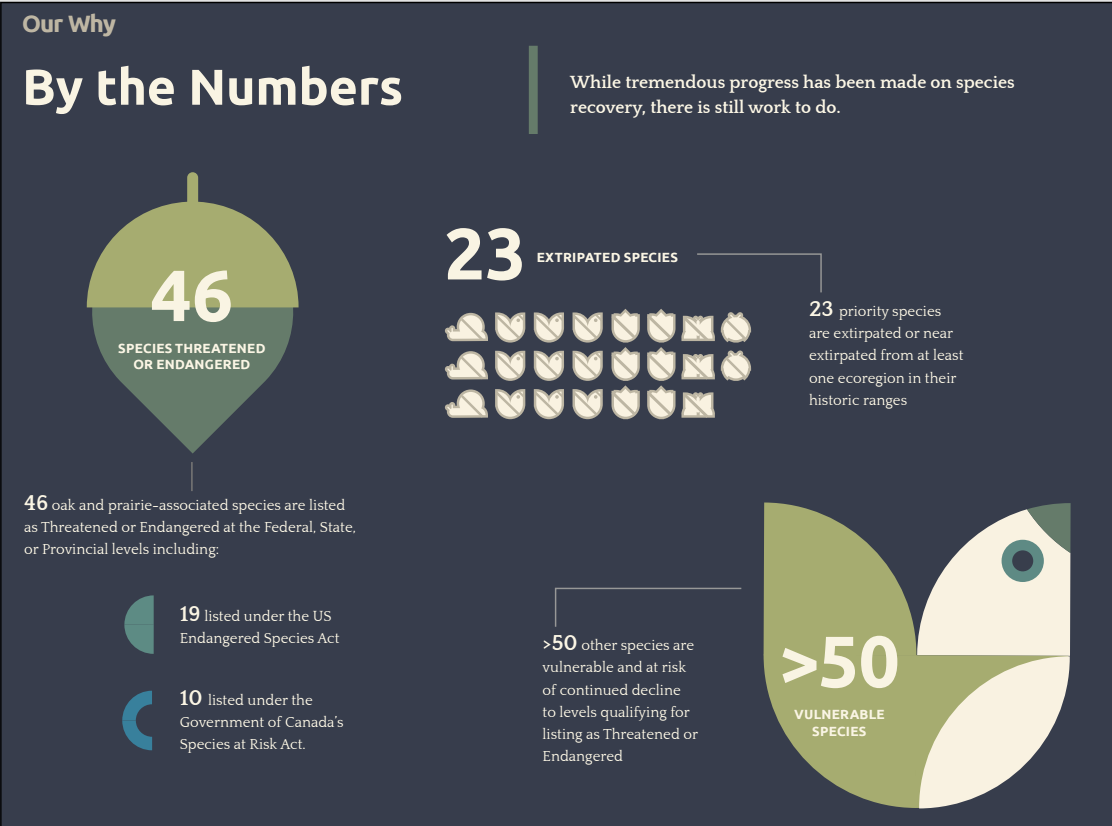
Native prairie-oak species are at a crossroads. Populations are declining, ranges are contracting, and many species are gone from parts of their historic range. Some have received official status as threatened or endangered; many others have not. Our goal is to save the most imperiled species and stop further declines.
Population and Habitat Objectives for Landbirds in Prairies, Oak, and Riparian Habitats of Western Oregon and Washington
This plan represents the collective efforts of individuals from multiple agencies and organizations within the Oregon-Washington Chapter of Partners in Flight.
It aims to fill a niche that is usually absent in other efforts by providing quantitative, prescriptive recommendations, and multi-scaled population and habitat objectives for 26 focal and seven imperiled bird species at several geographic scales (e.g., regional, subregional, site).
The implementation of these recommendations can be done independently or complementarily within the context of broader conservation goals to support and strengthen other plans.
Recommendations included are intended to guide planning efforts and management actions of land managers, direct expenditures of government and non-government organizations, and stimulate monitoring and research to support landbird conservation.
The recommendations are also expected to be the biological foundation for developing and implementing integrated conservation strategies for multiple species at multiple geographic scales to ensure functional ecosystems with healthy bird populations.
Learn more about what our partners are doing:
-
Willlamette Valley Oak and Prairie Cooperative
-
Klamath-Siskiyou Oak Network
-
East Cascades Oak Partnership
-
The Intertwine Alliance, Oak Prairie Working Group
-
Umpqua Oak Partnership
-
B.C. Coastal Douglas Fir and Associated Habitats Partnership
-
Joint Base Lewis McChord Sentinel Landscape
-
Cascadia Prairie-Oak Partnership
The Cascadia Prairie-Oak Partnership (CPOP) is a community of people and organizations that are involved in prairie-oak conservation and species recovery efforts in western Cascadia. CPOP strives to improve outcomes by facilitating increased collaboration, idea sharing, and information transfer among the CPOP community.

Contact Us about Oak and Prairie:
Sara Evans-Peters, Pacific Birds Assistant, U.S. Coordinator
The Latest Oak & Prairie News
Connecting Science and Stewardship with eBird: An interview with Dr. Andrew Stillman
JV-eBird collaborators present at the 2024 American Ornithological Society Annual Meeting. From left to right: Laura Farwell (Pacific Birds), Orin Robinson (Cornell), Rebekah Rylander (Rio Grande JV), Andrew Stillman (Cornell), Ashley Peele (Appalachian Mountains JV). We recently had the privilege of speaking with Dr. Andrew Stillman of the Cornell Lab of Ornithology. He is part […]
Highlights of the Klamath Siskiyou Oak Network and Umpqua Oak Partnership Guide For Private Landowners
Oak Chaparral habitat. Credit: Klamath Bird Observatory “99% of the terrestrial portion of the Willamette Valley-Puget Trough-Geogria Basin ecoregion is either private or tribal land. Nearly three-quarters of the populations of British Columbia, Washington, and Oregon live within this ecoregion.” – TNC Willamette Valley-Puget Trough-Georgia Basin Ecoregional Assessment This greatly impacts conservation and how we […]
The Pacific Northwest Oak Alliance and Cascadia Prairie-Oak Partnership are proud to announce the release of “Prairie, Oaks, and People – An Investment Strategy”
The Pacific Northwest Oak Alliance and Cascadia Prairie-Oak Partnership are proud to announce the release of “Prairie, Oaks, and People – An Investment Strategy” The Prairie, Oaks, and People Investment Strategy offers an action-oriented five-year strategy with $304.2 million of ready-to-implement projects. Developed by partnerships across the Pacific Northwest, this effort brings together tribes, conservation […]
